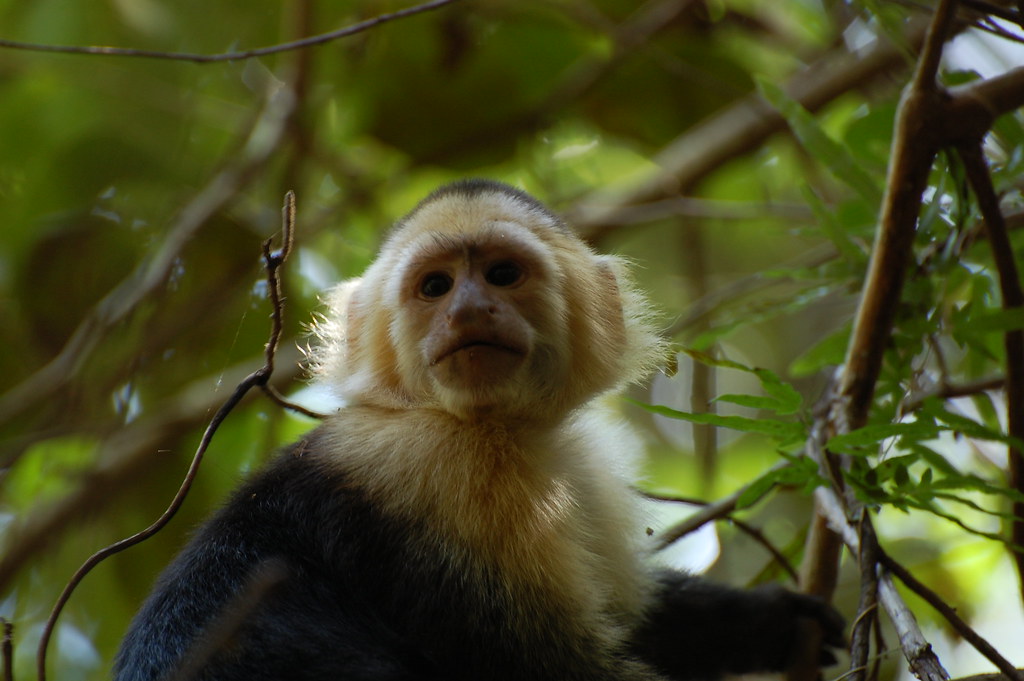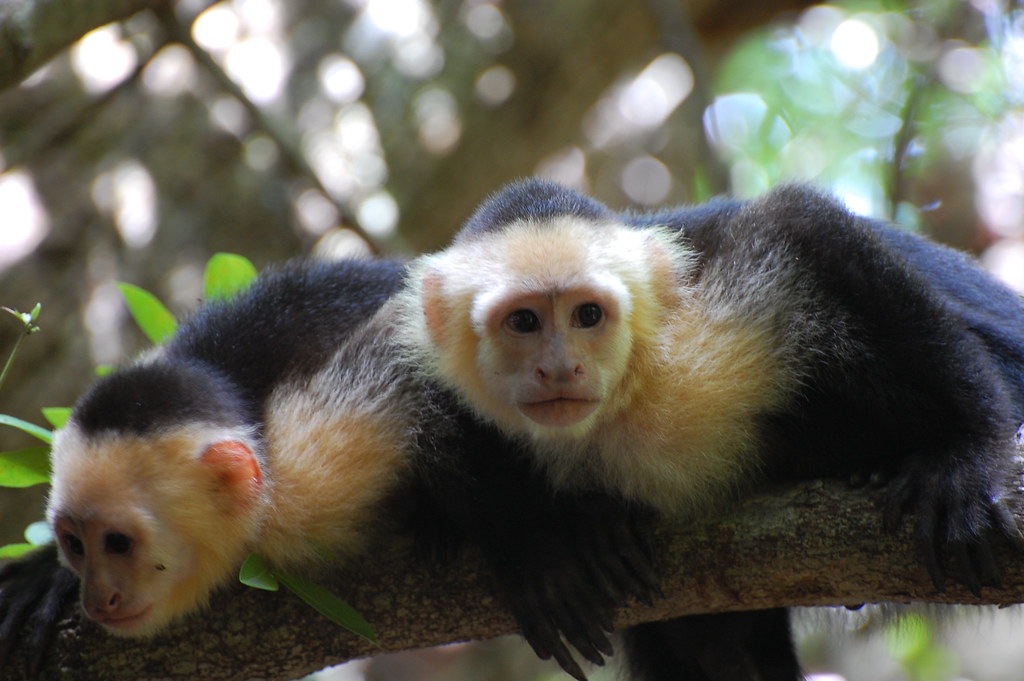News
Genetic link in primate points to source of adaption and longevity in capuchins

By Lauren Hines | Bond LSC
Through monkey poop and three years of work researchers from all over the world sequenced the Panamanian white-faced capuchin genome for the first time and devised novel methods to sequence many more wild capuchin genomes.
These monkeys have large brains for their small size and can live past 50. Wes Warren — Bond Life Sciences Center principal investigator — helped sequence the genome to find more answers about their unique brain-to-body ratio and long lifespans as part of the study. This work published Feb. 16 in Proceedings of National Academy of Science looks deeper at the genetic connections to these adapted traits.
“Other species of nonhuman primates don’t have that long lifespan, so the capuchin is a nice model and a different group of nonhuman primates to study that question,” Warren said.
Warren first got involved in his previous job at Washington University in 2017 when Amanda Melin, former principal investigator at Washington University, approached him about building the capuchin genome.
His main role in the study was in directing the genome assembly and using this genetic blueprint to analyze different types of selection pressures that impacted the genome.
Selection pressures are environmental or social factors that make it harder for species to survive and reproduce. Yet, when a small percentage of these species do survive — possibly due to a certain gene — their populations can explode. Afterward, that particular gene becomes widespread across the new population.
“There’s a whole variety of selection pressures that are brought to bear on a species genome, and a lot of that is driven by the environment,” Warren said. “The beauty of this experiment is there are two very distinct populations of capuchins in Costa Rica.”
The study looked at two groups: one in the southern lowland evergreen rainforest where rainfall and fruit are plentiful and another in the northern lowland tropical dry forest where periodic droughts occur.
A gene that affects kidney and water maintenance in the body became a particular interest in their analysis. That could be necessary for survival for the northern population who faced a dry climate and needed to conserve water.
“We can speculate that [these genes are] associated with this adaptation,” Warren said. “We don’t know for sure, and we make that point in the paper. It’s more of a discussion about this is a possibility, and these are real signals of selection. We’re not sure exactly if we can directly correlate them with an adaptation to a dry, hot climate, but it certainly makes biological sense.”
Warren and the other researchers discovered the gene, among others, by lining up genetic codes of capuchins and other mammals to find matching sets of nucleotides. This allowed researchers to identify known and novel genes, like the ones related to brain size and longevity.

Mike Montague, who previously worked under Warren while they were at Washington University, believes the correlation between brain size and longevity is due to genetics.
Genomes between capuchins and other animals showed differences that seemed to be tied to brain development, size and metabolizing mechanisms. Large brains require lots of fuel, so an efficient system for processing sugars would also be needed.
“Having an understanding of these genes and why they’re different in capuchins might be linked to these larger genetic pathways, [which] allow the capuchin to have this large brain,” Montague said.
As for longevity, researchers identified some genes associated with DNA damage response, metabolism, cell cycle and insulin signaling. While damage to DNA is thought to be a major contributor to aging, aging-related genes also deal with growth and development. This means researchers can’t be sure if the identified genes correlate with longevity.
While some genes found are associated with human cognition and large brain size in humans, they can’t be directly linked to human genes without further examination.
Researchers wouldn’t have been able to identify these genes and sequence the genome without a new technique developed by Joe Orkin, the study’s lead author. Orkin’s new technique, FecalFACS, isolated the DNA in capuchin feces of the animal’s intestinal cells.
Since capuchins are an endangered species, scientists can’t kill or capture them for study. Instead, they had to analyze their feces. The trouble was researchers originally had to cipher between the DNA of the food the capuchins ate and the DNA of the capuchin in feces. Orkin’s new technique allows them to sort that information easily.
“We observe this really beautiful population structure to these capuchins that live in this particular area,” Warren said. “We could not have got that… this larger number really let us get a very accurate portrayal of the population structure and how related they are to each other.”
Now that the paper has been published, the study’s next steps include expanding the sample beyond the two populations and investigating the functions of the newly discovered genes in other animals.
“There’s just a host of different questions that you could ask, now that we have this one particular genome added to the collection of other genomes for different primates,” Montague said.
More information about the study can be found in, “The genomics of ecological flexibility, large brains, and long lives in capuchin monkeys revealed with fecalFACS.” The study was published on Feb. 16 in Proceedings of the National Academy of Sciences.